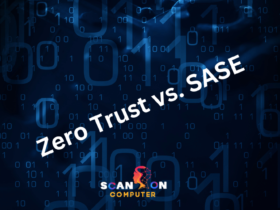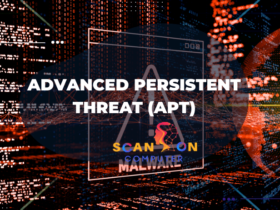In an era where cyber threats are increasingly sophisticated and persistent, relying on traditional perimeter-based defense has become inadequate. Organizations must reconsider their approach to cybersecurity through a comprehensive Zero Trust Strategy — a modern framework that enforces “never trust, always verify.” This guide explores how businesses can design and implement Zero Trust strategies to protect digital assets, support remote work, and minimize risk.
What Is a Zero Trust Strategy?
A Zero Trust Strategy is a security plan focused on eliminating implicit trust throughout an organization’s digital environment. It ensures that every user, device, and system is continuously verified before being granted access to resources, regardless of their location—inside or outside the corporate network.
Unlike traditional approaches that trust users after a single authentication or based on network location, Zero Trust requires dynamic, context-aware verification and limits access to the minimum necessary privileges. This minimizes the attack surface and confines potential breaches.
Why Is a Zero Trust Strategy Essential Today?
Recent studies reveal that data breaches cost organizations millions annually, exacerbated by remote work models and cloud adoption. Because attackers often exploit credentials or insider vulnerabilities, the old perimeter security mindset leaves companies exposed.
Key drivers for adopting a Zero Trust Strategy include:
- Protecting expanding attack surfaces in hybrid and cloud environments
- Securing remote and mobile workforces
- Reducing insider threat impact
- Enhancing compliance with data protection laws like GDPR and HIPAA
- Limiting lateral movement through microsegmentation and least privilege
Core Principles of Zero Trust Strategy
Successful Zero Trust implementations adhere to these foundational concepts:
-
Continuous Verification
No entity is implicitly trusted. Verification must be performed continuously, combining identity, device health, location, and behavioral analytics to authenticate and authorize access.
-
Least Privilege Access
Users and devices receive only the minimal permissions necessary to perform their tasks. This principle limits potential damage from compromised accounts.
-
Microsegmentation and Network Controls
The network is segmented into granular zones. Limiting connectivity between zones restricts an attacker’s ability to move laterally inside.
-
Device Security Posture
Access requires devices to meet defined security health criteria—patched, malware-free, and compliant—to ensure they are trustworthy.
-
Dynamic, Risk-Based Policies
Access decisions are adaptive, factoring in real-time context such as unusual behavior or network anomalies to increase security without sacrificing user experience.
Secondary Keywords to Use Naturally
- Zero Trust Architecture
- Identity and Access Management (IAM)
- Microsegmentation
- Continuous Authentication
Designing a Zero Trust Security Architecture
A robust Zero Trust strategy relies on key architectural components:
- Identity and Access Management (IAM): Centralized authentication with MFA and role-based access control.
- Endpoint Detection and Response (EDR): Continuous surveillance and enforcement of endpoint health.
- Network Microsegmentation: Divides infrastructure into isolated segments.
- Data Protection: Encryption and data access monitoring.
- Security Analytics: Real-time detection of anomalies and automated responses.
7 Steps to Building Your Zero Trust Strategy
- Identify Your Protect Surfaces: Pinpoint critical assets and data to focus security efforts.
- Map Transaction Flows: Understand how users and systems interact with these assets.
- Architect Microsegmentation Zones: Design network segments that align with protect surfaces.
- Define and Enforce Policies: Establish least privilege and conditional access rules.
- Implement Continuous Monitoring: Deploy tools for ongoing behavior and health checks.
- Adopt User-Centric Authentication: Use passwordless or multi-factor authentication.
- Develop a Phased Rollout Plan: Start with high-risk areas and gradually expand.
Practical Tips for Zero Trust Adoption
- Get Executive Buy-In: Align security goals with business objectives.
- Prioritize Asset Visibility: Maintain comprehensive inventories.
- Leverage Automation: Use AI/ML to detect threats and orchestrate responses.
- Train Employees: Cultivate a security-aware culture.
- Use Trusted Vendors: Consider managed services to augment expertise.
Table: Zero Trust Strategy Components and Benefits
| Component | Function | Benefit |
|---|---|---|
| Identity and Access Management | Authenticate and authorize users | Secure access, reduce credential theft |
| Endpoint Security | Verify device compliance | Prevent access from compromised devices |
| Network Microsegmentation | Limit lateral movements | Contain breaches, reduce blast radius |
| Data Protection | Encrypt and monitor data access | Protect sensitive information |
| Security Analytics | Monitor and detect anomalies | Rapid threat response |
Common Challenges in Zero Trust Implementation
- Complexity integrating legacy systems
- Balancing security with user experience
- Change management and organizational culture shifts
- Resource allocation and skilled workforce availability
Overcoming these requires phased strategies, clear communication, and leveraging expert partners.
FAQ: Zero Trust Strategy Essentials
Q1: How does a Zero Trust Strategy differ from traditional security?
A: Zero Trust assumes no implicit trust; it requires continuous verification regardless of network location.
Q2: What is microsegmentation in Zero Trust?
A: It’s breaking the network into secure zones to minimize lateral attacker movement.
Q3: Why is continuous authentication important?
A: It ensures identity and device compliance are constantly validated during active sessions.
Q4: Can Zero Trust work in hybrid environments?
A: Yes, it adapts to on-premises, cloud, and remote contexts.
Q5: What role does IAM play in Zero Trust?
A: IAM centralizes identity verification and access controls with multifactor authentication.
Q6: How do you start Zero Trust adoption?
A: Begin with identifying protect surfaces and implementing policies in high-risk areas.
Q7: Does Zero Trust require new technology?
A: It often involves upgrades but can also integrate existing tools with new practices.
Q8: How does Zero Trust improve compliance?
A: It enforces strict access controls and supports auditability.
Conclusion: Embracing Zero Trust for a Secure Future
Organizations face ever-increasing cyber risks that require reimagined defense strategies. A well-designed and implemented Zero Trust Strategy is a proven approach to enhance security posture, enable agile operations, and fulfill compliance mandates. By focusing on continuous verification, least privilege, and adaptive controls, enterprises can better protect critical assets across diverse environments.
Begin your Zero Trust journey today by assessing your environment, engaging stakeholders, and adopting a phased plan. The return is a resilient cybersecurity framework built to defend against modern threats and empower your organization’s digital transformation.













Leave a Reply
View Comments